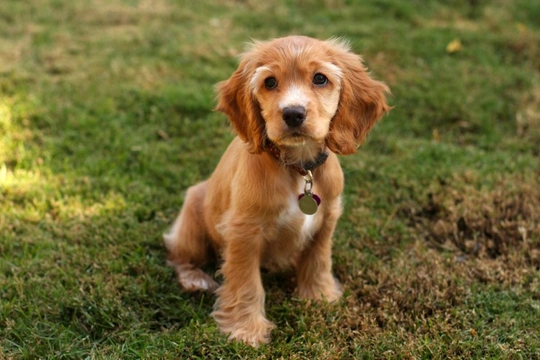
When should your puppy start wearing a collar?
All dogs need to be able to wear a collar happily and comfortably, and many dogs wear their collars all of the time. Within the UK, the law states that dogs must be microchipped and display details identifying their owner when out in public, and this latter is almost always achieved by attaching a name tag to the dog’s collar.
Most of us also walk our dogs by means of a lead attached to the collar (or harness) and your dog’s collar can also be useful for catching hold of them in an emergency, and can be handy in lots of other ways too – such as by providing a handy spot to attach a light and reflector to allow your dog to walk safely at night.
However, if you’ve only ever owned adult dogs before or have never owned a dog at all and are just starting to get to grips with caring for your first puppy, you might be wondering when your pup should start wearing their first collar, and how to manage this too.
In this article we will talk about when to start putting a collar on your puppy, how to get them used to it, and how to choose the right collar to fit their needs. Read on to learn more.
Before you collect your new puppy from the breeder
Some breeders will start using a very soft, light collar or even a coloured ribbon on their pups before they even leave their dam, to start to get them used to wearing one and often, to enable the litter’s owners and any visitors to the litter to tell the individual pups apart.
If this is the case with the breeder you are buying from, your pup should be ready to start getting used to wearing a proper collar from soon after you bring them home, and they may even be wearing one when you collect them.
Even if this is not the case, it is a good idea to ask the breeder about the type of collar material and construction that they recommend, as the breeder will have a good idea of what is appropriate for the type of dogs they own, and what style of collar is best for their pups.
Choosing your pup’s first collar
When you pick your puppy’s first collar, you might find yourself a little daunted by the sheer range available, and without your pup there at the time, knowing the right size and style to get and how it might measure up when in use can be difficult.
Measure your pup’s neck, research the different collar options available and try to have an idea of what you want in mind before you go shopping.
Choosing the right size, fit and strength is important to ensure that your pup is comfortable and that their collar is up to the task, and you should also try to avoid anything hanging or dangling that your pup might catch or hook a tooth into, such as dangling tags or fixings.
When correctly fitted, a dog’s collar should be snug on their neck but with room to fit two fingers under the band comfortably. However, when you first start getting a pup used to a collar, you may need to fit it a little looser and ensure that your pup is supervised when wearing it to ensure that they don’t catch it on anything.
When to start getting your puppy used to their collar
Unless your pup is already used to wearing a collar when you bring them home, it is best to let them settle in for a few days before you start getting them used to their collar. However, the earlier you get going with this the better, as your pup will need to be able to wear a collar before they are able to go outside for the first time, which will happen when they have received all of their vaccinations and waited for the appropriate period of time for them to take effect.
It might seem counterintuitive to start introducing a lot of change (like a collar) to your pup soon after they come home when they are still settling in, but this does make things easier for both you and your pup in the long run. Letting your puppy settle in and get used to their new living situation, only to begin making changes in a couple of weeks will be confusing for your pup, who is trying to get to grips with their new status quo.
Begin by putting the collar on your pup for a few minutes at a time, and allow them to get used to it. Expect a little head shaking, maybe some rolling around, and for your pup to show an interest in the collar and perhaps try to reach it or manipulate it, but if your pup starts trying to pull the collar off or turn it into a game, divert them with a toy or a treat.
When your pup doesn’t pay any attention to their collar, you can begin leaving it on for longer at a time, and leave them in it once you are happy that your pup has gotten used to things.
Remember that you should check the fit of the collar every week when your pup is still growing and developing, and that you will need to adjust the fit or replace it for a larger size as necessary too.



